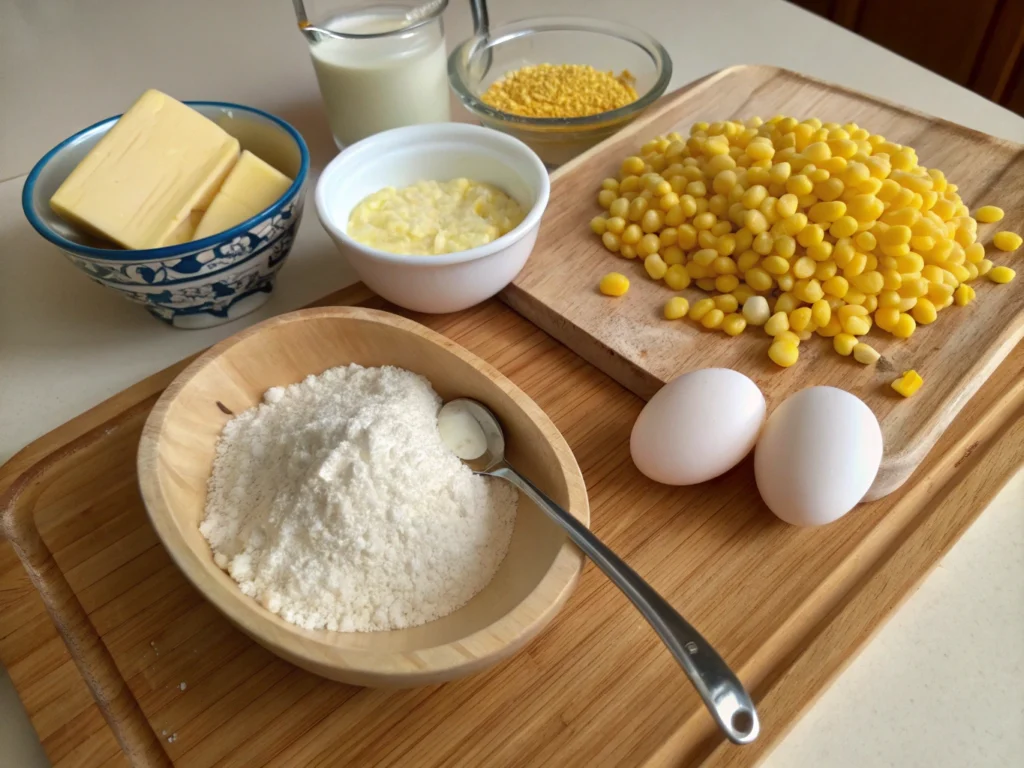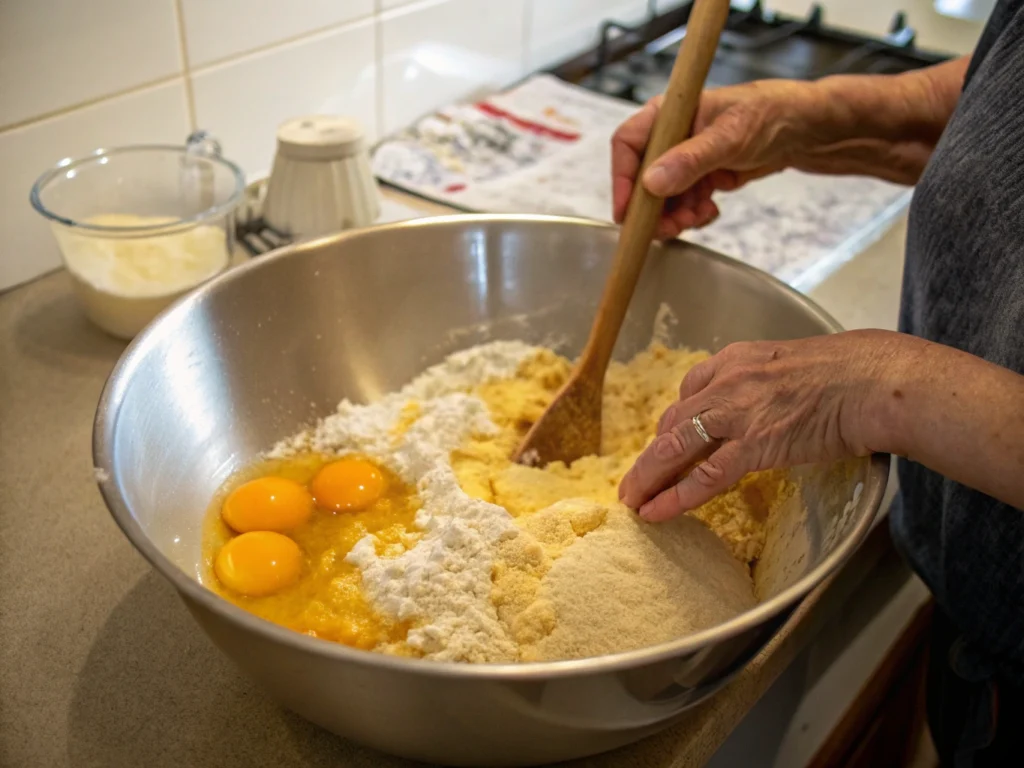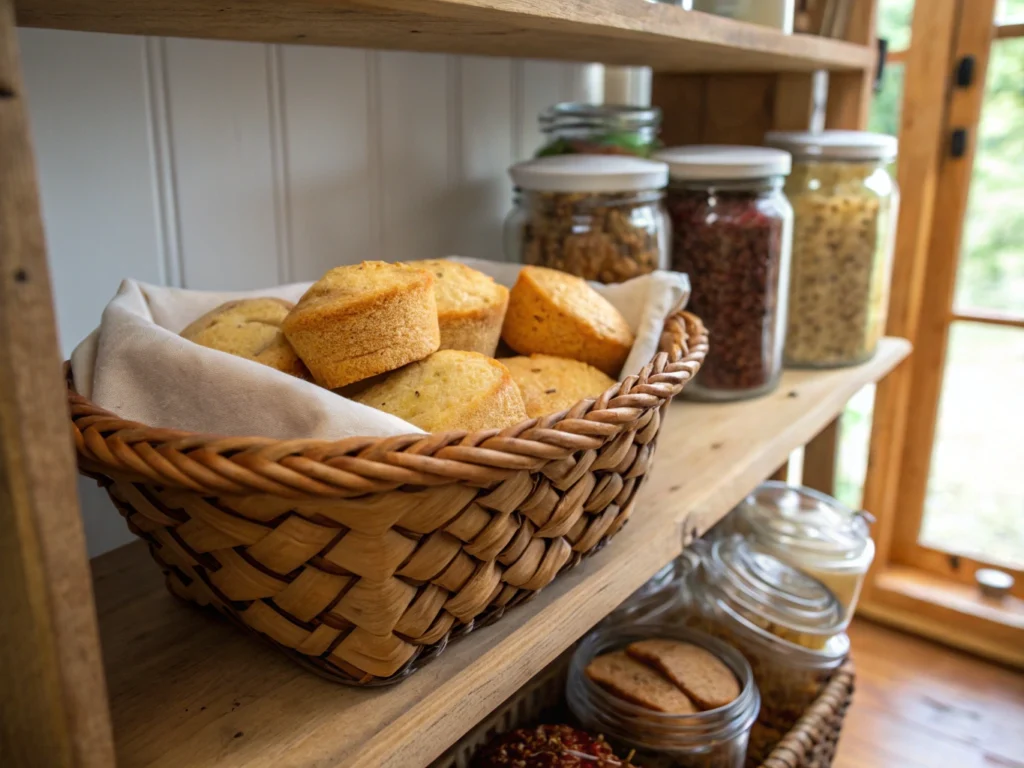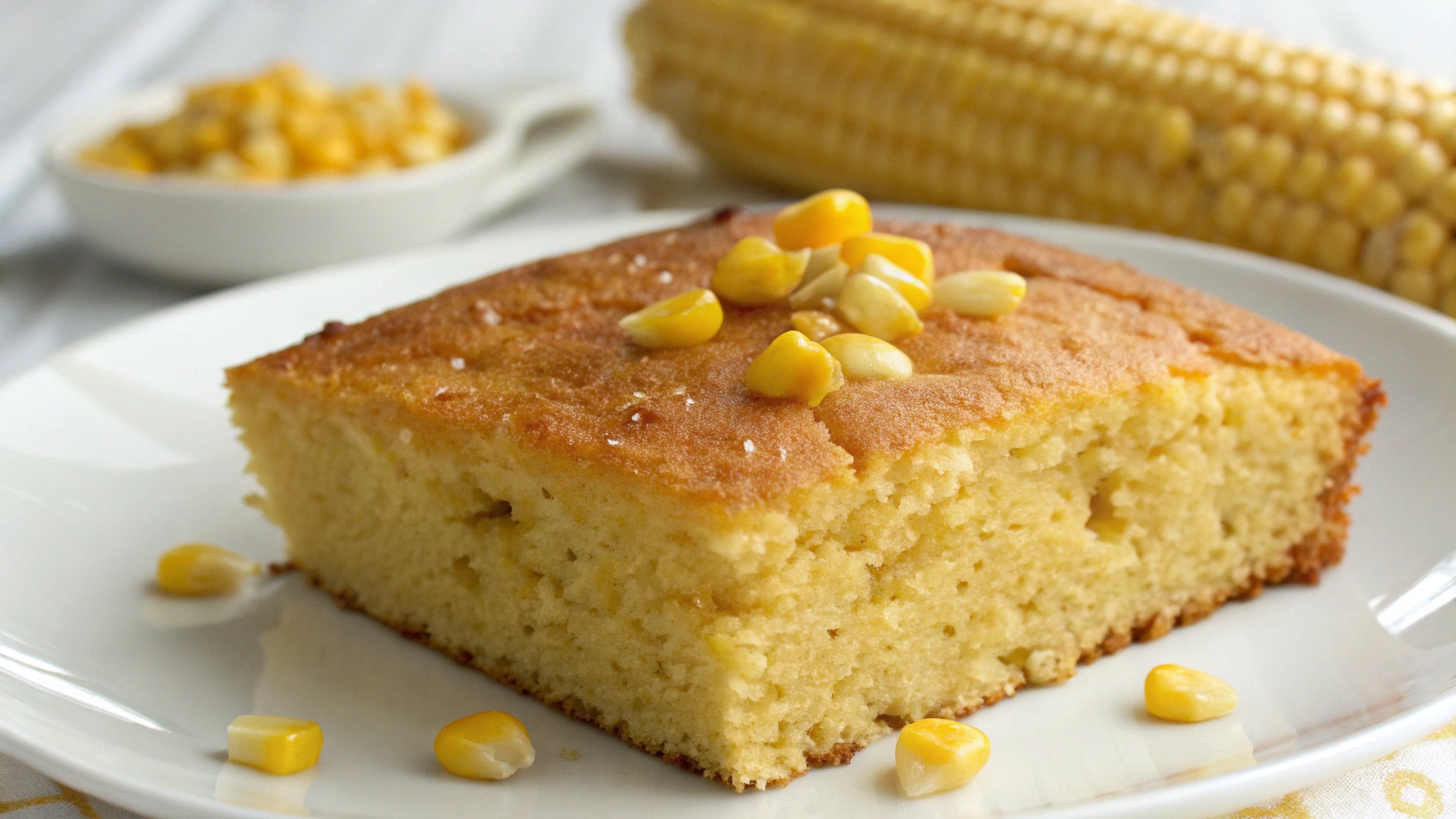Cornbread is a beloved comfort food, cherished for its golden hue, subtle sweetness, and crumbly texture. But for many, that texture can become a little too crumbly, leading to frustration as the bread falls apart before it reaches the fork. So, what’s the secret to keeping cornbread intact yet moist and delicious? In this article, we’ll explore what ingredient keeps cornbread from crumbling, delve into the science of baking, and share practical tips for achieving the perfect slice every time.
The Common Issue with Crumbling Cornbread
Why Does Cornbread Crumble?
Cornbread’s crumbly nature often stems from the delicate balance between its core ingredients—cornmeal, flour, and binding agents. Unlike bread made primarily with wheat flour, cornbread is traditionally made with a higher proportion of cornmeal, which contains no gluten. This lack of gluten, while contributing to its signature flavor, can also make it prone to falling apart.
Moreover, cornbread recipes are typically low in fat, which is another factor that can lead to dryness and crumbling. Overbaking or using the wrong flour-to-cornmeal ratio can also exacerbate this issue.
The Role of Texture in Cornbread’s Quality
Texture is a hallmark of good cornbread, but there’s a fine line between crumbly and cohesive. A moist, slightly dense structure ensures that the bread holds together well. This can be achieved by tweaking the ratios of key ingredients and ensuring proper hydration during the mixing process.
Common Missteps in Baking Cornbread
It’s easy to make mistakes when baking cornbread. One common error is skipping eggs or using low-quality ones, which reduces the bread’s binding capability. Others include under-mixing (leaving dry spots) or over-mixing, which can introduce too much air, making the bread fall apart once baked.
Understanding these pitfalls is the first step toward solving the problem and enjoying cornbread that’s moist, cohesive, and perfectly delicious.
Key Ingredients That Prevent Cornbread from Crumbling

The Role of Eggs in Binding Cornbread
When it comes to what ingredient keeps cornbread from crumbling, eggs are often the unsung hero. Eggs act as a binding agent, helping the ingredients hold together during baking. Their proteins create a network that adds structure to the bread while maintaining moisture. Without enough eggs—or if they’re omitted altogether—cornbread is far more likely to crumble.
To ensure your cornbread stays intact, stick to the recipe’s egg requirements. Some bakers even add an extra egg for a denser texture. For a unique twist, you can try flaxseed meal mixed with water as a vegan alternative to eggs, which also helps bind the bread.
The Impact of Fat Content on Cornbread Stability
Fat is another crucial player in preventing crumbling. Ingredients like butter, oil, or even sour cream not only add richness to the flavor but also keep cornbread moist and less likely to fall apart. Cornbread made with too little fat often turns dry and crumbly because fat helps trap moisture and improve the bread’s cohesiveness.
Butter lends a classic taste, while oil provides superior moisture retention. For an extra tender crumb, consider adding a dollop of mayonnaise—it might sound unusual, but it works wonders!
How Milk or Buttermilk Affects Cornbread’s Texture
Liquid ingredients like milk or buttermilk are essential for achieving the right consistency in cornbread batter. Buttermilk, in particular, is a favorite among bakers because of its acidity, which tenderizes the gluten in the flour and enhances moisture retention. This makes the bread softer and less crumbly.
If buttermilk isn’t on hand, a simple mixture of milk and lemon juice can mimic its effects. Be careful, though—too much liquid can lead to a gummy texture, so always follow the recipe closely.
Secret Ingredients for Perfect Cornbread
Beyond the usual suspects, there are a few “secret” ingredients that can take your cornbread to the next level. A spoonful of honey not only adds sweetness but also helps retain moisture, giving the bread a more cohesive structure. Similarly, a splash of cream or yogurt can make a big difference by boosting the bread’s richness and stability.
For those seeking a gluten-free option, xanthan gum or psyllium husk powder can be added to mimic the binding properties of gluten, ensuring your cornbread doesn’t crumble apart.
Understanding the Science Behind Cornbread’s Structure
The Chemistry of Cornmeal and Gluten
Cornmeal, the star ingredient in cornbread, is naturally gluten-free. This lack of gluten is both a blessing and a challenge. Gluten is a protein found in wheat flour that provides elasticity and structure to baked goods. Without it, cornbread relies on other ingredients, like eggs and fat, to maintain its shape and texture.
Adding a small amount of wheat flour to the batter can introduce just enough gluten to improve structure without compromising the traditional taste of cornbread. For gluten-free versions, binding agents like tapioca starch or a pre-mixed gluten-free flour can be used.
The Importance of Moisture Retention
Dryness is a leading cause of crumbly cornbread. Moisture-retaining ingredients like buttermilk, oil, and eggs work together to keep the bread soft and cohesive. Overbaking, on the other hand, evaporates these essential liquids, leaving behind a dry, crumbly texture. Always test your cornbread a few minutes before the recommended bake time to avoid this issue.
Balancing Dry and Wet Ingredients
The golden rule of cornbread making is achieving the right ratio of dry to wet ingredients. Too much dry (like cornmeal or flour) and your bread will crumble; too much wet, and it could turn dense and gummy.
A general tip is to combine your wet ingredients first—such as eggs, milk, and oil—before gently folding them into the dry mixture. Over-mixing the batter can introduce too much air, resulting in a fragile structure that crumbles easily. Keep it light and gentle for best results.
Tips for Baking Non-Crumbly Cornbread

Choosing the Right Recipe
Not all cornbread recipes are created equal. To avoid crumbling, opt for recipes that emphasize moisture-retaining ingredients like buttermilk, oil, and eggs. A well-balanced recipe will include the right proportions of cornmeal and flour to ensure your bread has enough structure without becoming too dry.
For a tried-and-true option, explore our Southern Cornbread Recipe with Beef Tallow, which balances moisture and flavor beautifully.
Adjusting Oven Temperature and Baking Time
Baking cornbread at too high a temperature or for too long can dry it out, leading to that dreaded crumbly texture. Keep your oven at a moderate 375°F and check your bread a few minutes before the timer goes off. When a toothpick inserted in the center comes out clean, it’s ready to take out of the oven.
Adding Extra Ingredients for Better Binding
For added insurance against crumbling, consider mixing in a little shredded cheese, which melts and helps hold the bread together. Another secret ingredient? Creamed corn! It not only provides sweetness but also adds extra moisture and texture, making your cornbread soft and cohesive.
If you’re adventurous, try adding a dollop of Greek yogurt to the batter—it gives the bread a subtle tang and excellent stability.
FAQ Section
What Can I Add to Cornbread to Make It Less Crumbly?
Wondering what ingredient keeps cornbread from crumbling? The most effective options include eggs for binding, fat (like butter or oil) for moisture, and buttermilk for a tender texture. If you want to experiment, adding a spoonful of sour cream or a handful of shredded cheese can also work wonders.
Does Using Oil or Butter Make a Difference?
Yes! Both oil and butter are excellent for preventing dry, crumbly cornbread, but they serve slightly different purposes. Butter enhances flavor with its rich, creamy taste, while oil is better at retaining moisture. A mix of the two often yields the best results.
Are There Gluten-Free Alternatives for Binding Cornbread?
Absolutely! If you’re avoiding gluten, try adding xanthan gum or psyllium husk powder to the batter. These ingredients mimic gluten’s elasticity, helping to keep your cornbread from crumbling while maintaining a light, tender texture. Pair them with a good gluten-free flour blend for optimal results.
For more inspiration, check out Difference Between New York and Southern Cornbread to explore regional variations and their unique baking techniques.
Common Variations in Cornbread Recipes
Southern-Style Cornbread
Southern-style cornbread is known for its savory flavor and golden crust. This variety typically uses buttermilk and a touch of bacon grease or butter, which adds depth and moisture to the bread. Unlike sweeter versions, Southern cornbread leans on simplicity, letting the cornmeal’s natural flavor shine.
A well-balanced Southern cornbread recipe often includes just enough flour to prevent crumbling without overshadowing the traditional texture. This style answers the question, what ingredient keeps cornbread from crumbling, with its emphasis on moisture and binding agents like eggs and fat.
Sweet Cornbread
Sweet cornbread, often favored in northern regions, includes sugar or honey for a touch of sweetness. This variation uses more flour than its Southern counterpart, which helps create a softer, cake-like texture. To enhance moisture, sweet cornbread recipes commonly call for milk or sour cream, ensuring the bread doesn’t crumble when sliced.
If you’re a fan of sweeter flavors, try incorporating creamed corn into your recipe—it adds both sweetness and moisture, solving the common issue of crumbly cornbread.
How to Store Cornbread to Keep It Fresh

Proper Storage Techniques
Storing cornbread correctly is just as important as baking it right. Left out in the open, cornbread can dry out quickly, making it prone to crumbling. To keep it fresh, wrap the bread tightly in plastic wrap or aluminum foil, then place it in an airtight container. This method locks in moisture, ensuring the bread stays soft and intact.
If you plan to enjoy your cornbread within a day or two, store it at room temperature. For longer storage, refrigerate or freeze it. When reheating, wrap it in foil to prevent moisture loss, and warm it in the oven for a fresh-out-of-the-oven feel.
Freezing Cornbread
Freezing is a great way to extend the life of your cornbread. Wrap individual slices in plastic wrap, then place them in a freezer-safe bag. When you’re ready to eat, thaw slices at room temperature or warm them directly in the oven. This ensures the bread retains its original texture and flavor.
Conclusion: Achieving Perfect Cornbread Every Time
Cornbread’s warm, comforting flavor is a staple in many kitchens, but its tendency to crumble can frustrate even experienced bakers. By understanding what ingredient keeps cornbread from crumbling—whether it’s the binding power of eggs, the moisture provided by buttermilk, or the richness of fat—you can ensure your cornbread stays soft, tender, and cohesive.
From balancing dry and wet ingredients to choosing the right storage techniques, every step plays a role in achieving perfect results. Whether you prefer the savory Southern-style or the sweet Northern variation, following these tips will help you bake cornbread that holds together beautifully.
Key Takeaways:
- Eggs and fat are essential for binding the bread and adding moisture.
- Ingredients like buttermilk, sour cream, and creamed corn can enhance texture and flavor.
- Avoid overbaking to prevent dryness, and store your cornbread properly to keep it fresh.
For more cooking inspiration, check out Southern Cornbread Recipe with Beef Tallow or Difference Between New York and Southern Cornbread.

